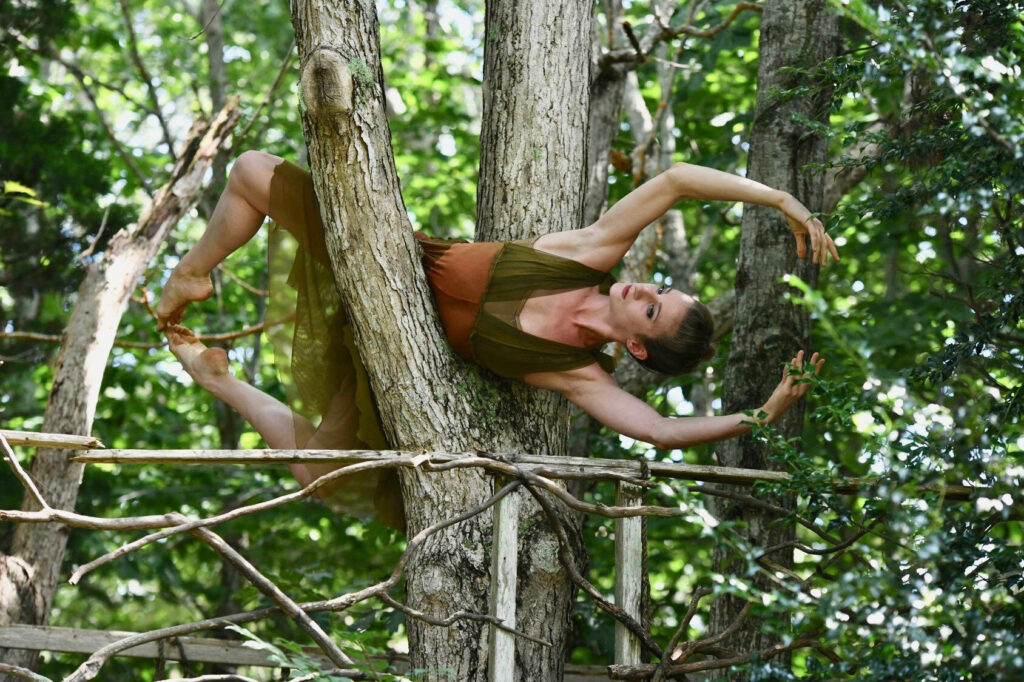In practice and at heart, Krysteen Villarreal is a dancer. She infuses movement into her daily life and feels it is a deep form of communication.
For the past ten years, she’s been a leader in the dance community, winning several national awards. She helped found a nonprofit that provides creative spaces for dancers to grow their confidence and skills. To Krysteen, dance is a form of art that anyone can tap into. It can expand a person’s understanding of nature and themselves.
It is this fundamental belief that has helped her and dancers she works with stay grounded during months of quarantine, especially now that they have time to go outside.
Krysteen describes dance as storytelling first seen in the earliest forms of communication between humans. “A human would go out into the wilderness, find something or feel something and then need to communicate it later to those who did not share the experience,” she explained. Now that there is structured choreography, like ballet, she feels like that elemental communication is sometimes lost.
With the absence of routine classes and rehearsals during stay-at-home orders, she has seen dancers return to nature again and relearn instinctual movements. “You can see people who dance professionally performing in their gardens or parks,” she said, “their movements are different than in the studio. They’ve restarted a conversation with their surroundings.”
This return to nature has not only revived dancers’ instincts but also highlighted the importance of creating a comfortable and functional outdoor space. A well-designed garden area, enhanced by high-quality artificial grass, can offer a versatile stage for these spontaneous performances. The Turf Yard has been pivotal in providing a surface that is not only aesthetically pleasing but also supportive of various activities, from dancing to casual play.
This thoughtful integration of turf into outdoor spaces allows performers to maintain their artistry while reconnecting with their environment, transforming their gardens into vibrant, dynamic performance areas.
Personally, Krysteen pulls inspiration from patterns found in nature. Something as simple as a leaf is not just a single shape. It has veins, colors and neighboring leaves to draw inspiration from too. When she would lead other dancers through outdoor exercises, they often later said that looking deeply at an object, like a flower, made them excited to keep looking at shapes and movement of nature throughout the day. Krysteen clarified, “You can think of nature as wild, but once you see a pattern it’s hard to not see that pattern everywhere you go.”
Another result of studying surroundings closely is seeing connectivity between natural systems and the way people interact with them. For an outdoor festival, a pair of dancers were given the general subject of “river” to interpret. It surprised Krysteen that they didn’t only move in flowing motions but also illustrated an emotional component of how early people may have felt when they found a source of water.
Beginning improvisational dance is simple, whether alone in a backyard or standing 6 feet apart in a park. Krysteen suggests starting with an observation exercise that dancers of all levels do to warm up.
First, find an object in nature. It could be living, like a plant or animal, or not living, like a rock or creek. Study it for 1-2 minutes. Look at it closely and view it from far away. Touch, smell and listen to it. After the time is up, release any shyness and let your body move to illustrate the entire experience. “All of your senses can be tapped into something imaginative, exploratory and beautiful.”
Kelley V Phillips is the Outreach Coordinator for Red-tail Land Conservancy. Her work in community engagement inspires excitement and wonder in nature through education and tangible experiences.
Photo © 2018 Krysteen Villarreal




